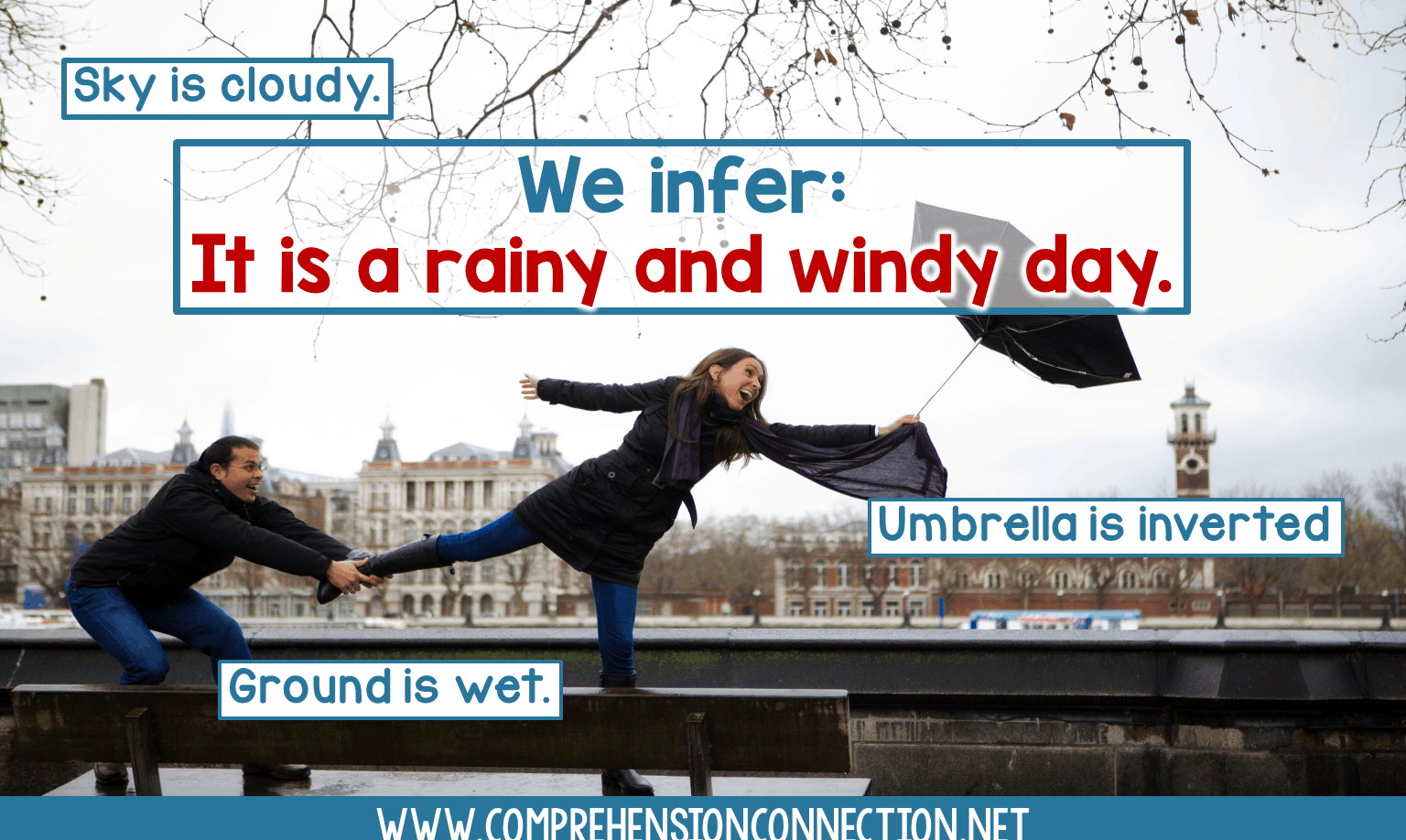Inference and Drawing Conclusions Lesson Plans







Do yous find it difficult to explain the departure betwixt making inferences and drawing conclusions? If not, you lot are not alone. At lunch yesterday, this was a big contend amid literacy specialists and instructional coaches. Are they synonyms? Is there a slight divergence? Practice you use inferring to draw conclusions? Today, I'm going to explore these and hopefully provide you with description and a next step for instruction.
The Difference with Cartoon Conclusions and Making Inferences
Inferences:
Making inferences is the process of figuring out missing information from information that IS included . Inferences tin be fabricated with pictures, with characters, with plot, with the setting, and even with vocabulary. To infer is a thinking process of reading between the lines. Nosotros can use pictures and text clues to infer, and making inferences are more than situational.
Conclusions:
Conclusions are the judgments or decisions reached based on data learned. It requires reasoning or deep thinking and observation skills . I think of cartoon conclusions as solving a mystery. Drawing conclusions is deeper than an inference. In fact, making inferences helps us draw conclusions.
Have the title paradigm with the little guy sitting in the suitcase. Where is he going? How can you tell? Well, this is a really fun style to give a physical example to kids. Most of us take a suitcase on hand, so fill it with items you'd utilise at a embankment. Pull ane item out at a time, and let the kids make simple inferences about the activities you'll do on your holiday. Then, hash out the conclusions they can brand based on all of the show in the suitcase and based on your discussions.
Examples of Making Inferences

What we infer:
In this example, the facts we run into are that the sky is cloudy, the footing is wet, and the umbrella is inverted. These facts betoken that it's rainy because the ground'southward wet and because she has an umbrella. Nosotros tin infer that it is windy based on the fact that the human being is holding on to the woman and because the umbrella is inverted.
What we conclude:
From this aforementioned photo, you could also gather clues for a conclusion. You might wonder, "How will the weather bear upon the couples plans later in the day?" The couple has plans to get hiking. Well, we'd conclude that they'll cancel their plans because it volition be muddy and impossible to hike without having their shoes stuck in the mud.

What we infer:
In this adjacent example, the facts we see are that the the boys are playing on a skid and slide. They are wearing bathing suits, and water is flowing over the plastic canvass. These facts indicate that it must exist warm and sunny because I see a glow over the boys, and they're covered in water. I besides infer that they are having fun since they are grinning and look happy. Finally, I infer that this cools them off since the water splashes up on them.
What nosotros conclude:
Conclusions from this photograph is that many children like to play on slip and slides in the summer because they cool you off, are fun, and work well with a group of kids. If it started to rain, we'd probably conclude that the boys would go inside. Why? Well, there might exist a storm. It might also become slippery running on the grass. Another conclusion if rain moved in might be that the boys would prefer playing an indoor game. Why? Well, without the sun, it would get cooler and wouldn't feel comfy beingness wet in a bathing suit.
Last Thoughts on Drawing Conclusions and Making Inferences
So, the difference betwixt an inference and a conclusion is in the depth. Conclusions require a deeper understanding than an inference and clues that are gathered beyond the text or over fourth dimension.
As you teach these skills, pairing them might clarify the departure for your students. I'd recommend working with mentor texts to model the divergence. Hither is a collection y'all might start with. Be certain to search on Pinterest for additional materials to go with these titles. Other bloggers accept written nearly them.


Equally you practice, you lot can refer to the anchor chart to the right and use it with these texts, I've also included organizers that yous can use for recording the facts, cognition, inferences and conclusions. You might fifty-fifty utilize the same book for each purpose just to find examples of each. This skill will take lots of do as it'south probably the toughest for many kids to chief since 4th and fifth graders are notwithstanding at the physical thinking stage.
To access the anchor charts and lesson materials I'm sharing, delight sign up for my email listing using the form beneath. Teaching the difference between an inference and a conclusion is actually tough. I promise these suggestions will help pause information technology down for your kids.
Resources You Might Like:
Need a fun station activity for boosted practice? These paper handbag mini books are lots of fun. They tin be started in your small groups and sent to stations for finishing.
Making Inferences Paper Bag Book
Cartoon Conclusions Paper Bag Volume

I promise you lot'll have a fantastic weekend and volition come back soon. Don't forget to download the freebie above!

rodriquezamited1963.blogspot.com
Source: https://www.comprehensionconnection.net/2019/03/exploring-difference-between-making.html
0 Response to "Inference and Drawing Conclusions Lesson Plans"
Postar um comentário